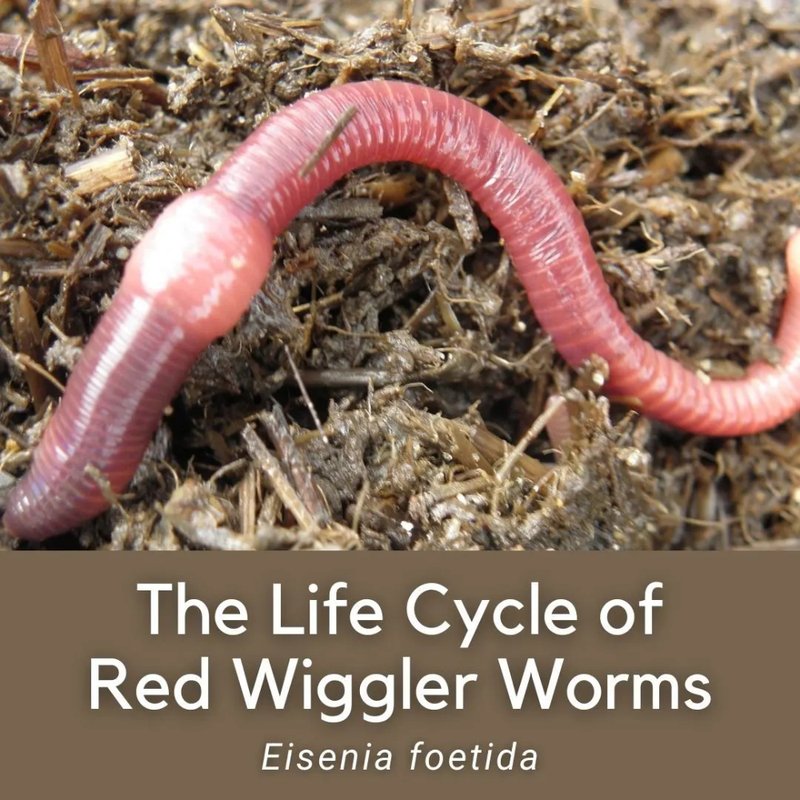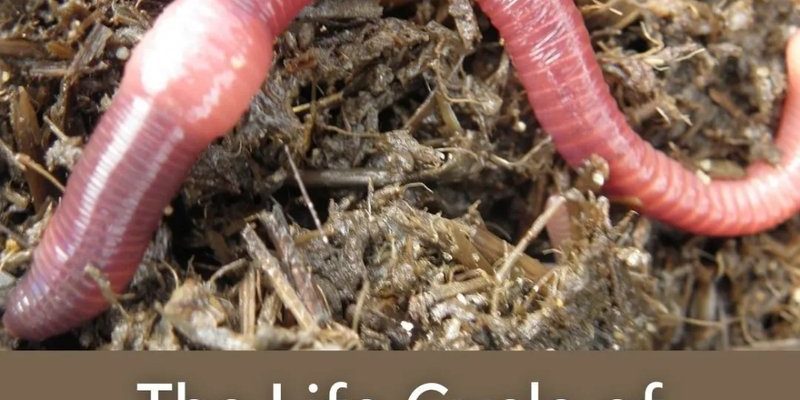
These worms thrive in nutrient-rich compost and are often the stars of vermiculture (that’s worm farming, if you’re wondering!). They not only contribute to waste reduction but also serve as excellent bioindicators of soil quality. Folks who are looking into sustainable agriculture or simply want to understand their garden better might find these red wigglers to be invaluable. Let’s dig deeper into how these little guys help monitor our environment and what they can tell us.
What Are Red Wigglers?
Red wigglers are small, reddish-brown worms that typically grow to about 3–4 inches long. Unlike earthworms, which burrow deep into the ground, red wigglers prefer to live in the top layers of soil or in compost heaps. Think of them as the friendly neighbors of the worm world, always hanging around where the action is—especially around decaying organic matter.
These worms have a unique digestive system that allows them to break down food scraps and organic waste efficiently. As they munch on these materials, they produce nutrient-rich castings, often referred to as “black gold” by gardeners. Not only do these castings improve soil consistency, but they also enhance microbial activity, which is essential for healthy plant growth. So, while they’re busy snacking, they’re also working wonders for your garden!
You might be wondering why they’re critical for environmental monitoring. Well, red wigglers react to changes in their environment quite quickly. Changes in soil pH, moisture levels, and contaminant presence can affect their behavior and population size, making them excellent indicators of soil health.
Why Use Red Wigglers for Environmental Monitoring?
The beauty of using red wigglers for environmental monitoring lies in their simplicity and effectiveness. First off, they’re easy to cultivate. If you have some kitchen scraps, a little space, and a bit of patience, you can set up your own worm farm. It’s a hands-on way to engage with your environment!
Moreover, red wigglers are incredibly sensitive to changes in their habitat. If there are toxins or pollutants in the soil, you’ll likely see a decline in their numbers. When worms thrive, you can feel pretty confident about the soil conditions. This sensitivity makes them a low-tech but highly effective bioindicator. You won’t need fancy equipment or complex procedures to gauge the health of your soil—just a keen eye on your worm buddies!
Let’s not forget their role in sustainability. As they process organic waste, red wigglers help reduce landfill contributions. If we take care of them, they, in turn, help us take care of our environment. It’s a beautiful cycle of give and take!
How to Monitor Environmental Conditions with Red Wigglers
To use red wigglers for monitoring, you don’t need a PhD in environmental science. Here’s a simple step-by-step guide to get started:
- Set Up Your Worm Bin: Find a container (it can be a simple plastic bin) and add bedding material like shredded newspaper or cardboard. Then, introduce the red wigglers.
- Add Organic Matter: Feed your worms kitchen scraps like vegetable peels, coffee grounds, and eggshells. Avoid meat and dairy, as these can attract unwanted pests.
- Observe Their Behavior: Keep an eye on your worms. If they’re active and reproducing, your conditions are likely good. If they seem sluggish or die off, it’s a red flag that something’s off.
- Test Soil Samples: As you collect worm castings, consider testing your soil. Look for signs of community, like how plants grow around your worm bin compared to areas without worms.
By following these steps, you’ll not only be nurturing your own worm farm but also gaining valuable insights into your local environment.
Common Challenges with Using Red Wigglers
While red wigglers are fairly hardy, they come with their own set of challenges. One common issue is maintaining the right moisture level. If the bedding is too wet, your worms can drown; too dry, and they’ll become inactive. A good rule of thumb is to feel the bedding—it should feel like a wrung-out sponge.
Temperature also plays a crucial role in keeping your worms happy. Red wigglers thrive in temperatures between 55°F and 77°F. If it’s too hot or too cold, they might slow down or even perish. For those in colder climates, a little insulation can go a long way, especially during the winter months.
Lastly, pests can be a pain when maintaining a worm bin. Fruit flies are the most common culprits. If you notice them around, check your feeding habits. Make sure you’re not overfeeding and that the bin is well-ventilated. A good balance will keep your red wigglers healthy and pest-free!
Comparing Red Wigglers to Other Soil Organisms
You might be curious about how red wigglers stack up against other soil organisms. For instance, earthworms are often thought of as the superheroes of soil health. While they certainly play an important role, they live deeper in the soil and don’t process organic material quite like red wigglers do.
Here’s a quick comparison:
| Organism | Habitat | Feeding Method | Environmental Indicator |
|---|---|---|---|
| Red Wigglers | Topsoil/Compost | Surface-feeding | Very Sensitive |
| Earthworms | Deep Soil | Burrowing | Moderate |
| Microorganisms | Soil Matrix | Decomposing | Variable |
While all these organisms contribute to soil health, red wigglers excel in processing organic waste and indicating environmental status. They’re like a friendly neighborhood watch for your garden!
Real-World Applications of Red Wigglers
Red wigglers are not just for backyard gardeners; they have real-world applications in various fields. For example, in urban areas where soil health might be compromised due to pollution, these worms can provide valuable data to city planners and environmentalists. By setting up worm farms in community gardens, we can track urban soil health and promote sustainable practices.
Schools and educational programs also use red wigglers in science projects. Kids learn about ecosystems, composting, and sustainability hands-on. Watching these little creatures work helps foster a love for the environment, encouraging the next generation to take care of our planet.
Moreover, farmers can benefit from integrating red wigglers into their practices. By monitoring soil conditions with these worms, they can adjust their farming methods more sustainably. It’s a win-win for both productivity and the environment.
In a world where environmental health is constantly at risk, red wigglers stand out as unsung heroes. Their ability to improve soil quality while serving as bioindicators makes them a fantastic addition to any eco-friendly practice. Whether you’re an aspiring gardener, a teacher, or an urban planner, these little worms can provide valuable insights into soil health.
So why not harness the power of red wigglers? By keeping an eye on these tiny creatures, you’ll not only be nurturing them but also taking an active role in monitoring and improving our environment. It’s a step toward sustainability that’s as easy as tossing in some vegetable scraps and watching the magic happen!

